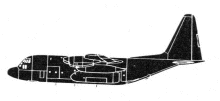Incident Overview

Description
An Airlines PNG DHC-6 Twin Otter passenger plane was destroyed when it flew into a mountainside near Kokoda Airport (KKD), killing all 13 on board. Flight CG 4684 departed Port Moresby-Jackson Field (POM) at 10:53. The Area Weather Forecast (ARFOR) for the intended flight indicated forecasts of isolated showers and thunderstorms with areas of rain. Significant cloud layers at estimated base levels of 800ft with tops of 18,000ft above Mean Sea Level (MSL). Isolated Cumulo Nimbus (CB) or thunderstorm clouds was also forecasted reaching to tops of 45000 ft. Freezing levels was estimated at 15,500 ft above MSL with moderate to severe turbulence within the vicinity of the CB and cumuliform clouds. At 11:10, the flight crew of P2-MCB reported leaving 9,000 ft on descent to Kokoda via the Kokoda Gap, which is approximately 12 NM (22 km) south-east of the Kokoda airstrip. This was the last radio contact with the flight. The airplane flew into the side of a tree covered mountain at an altitude of 5774 feet (1760 metres). The Kokoda Airport is located in a valley at an elevation of 1273 feet, surrounded by mountains in the North and South, some with an elevation of 8500 feet. The airfield has a single runway, 17/35. It has a 2,2% down slope with landings restricted to runway 17. CONTRIBUTING SAFETY FACTORS: * Visual flight in the Kokoda Gap was made difficult by the extensive cloud coverage in the area. * The crew attempted to continue the descent visually within the Kokoda Gap despite the weather conditions not being conducive to visual flight. * It was probable that while manoeuvring at low level near the junction of the Kokoda Gap and Kokoda Valley, the aircraft entered instrument meteorological conditions. * The aircraft collided with terrain in controlled flight. OTHER SAFETY FACTORS: * The copilot was assessed during normal proficiency checks for instrument approach procedures but was not qualified for flight in instrument meteorological conditions. * The operator did not have a published emergency recovery procedure for application in the case of inadvertent flight into instrument meteorological conditions. [Minor safety issue] * The Civil Aviation Safety Authority Papua New Guinea surveillance of the operator did not identify the operations by the operator in contravention of Rule 91.112. * The lack of a reliable mandatory occurrence reporting arrangement minimised the likelihood of an informed response to Papua New Guinea-specific safety risks. [Minor safety issue] * There was no qualified Director (or similar) of Aviation Medicine in Papua New Guinea (PNG). [Minor safety issue] * The lack of both flight data and cockpit voice recorders adversely affected a full understanding of the accident by the investigation. [Minor safety issue] OTHER KEY FINDINGS: * The investigation was unable to discount the possible incapacitation of the copilot as a factor in the accident. * Although not required by the aviation rules at the time of the accident, the adoption of threat and error management training for flight crews, and of the methodology by operators would provide a tool to identify and mitigate operational risk as follows: – by flight crews, when flight planning and during flight; and – by operators, when developing their operational procedures.
Source of Information
http://www.skybrary.aero/index.php/DHC6,_vicinity_Kokoda_Papua_New_Guinea,_2009_(CFIT_HF)http://www.skybrary.aero/index.php/DHC6,_vicinity_Kokoda_Papua_New_Guinea,_2009_(CFIT_HF)Primary Cause
Weather conditions, particularly the combination of isolated showers and thunderstorms, significant cloud layers, and a high probability of cumuliform clouds, combined with the pilot’s descent into instrument meteorological conditions, created a hazardous environment that resulted in the aircraft’s uncontrolled descent and collision with terrain.Weather conditions, particularly the combination of isolated showers and thunderstorms, significant cloud layers, and a high probability of cumuliform clouds, combined with the pilot’s descent into instrument meteorological conditions, created a hazardous environment that resulted in the aircraft’s uncontrolled descent and collision with terrain.Share on:



